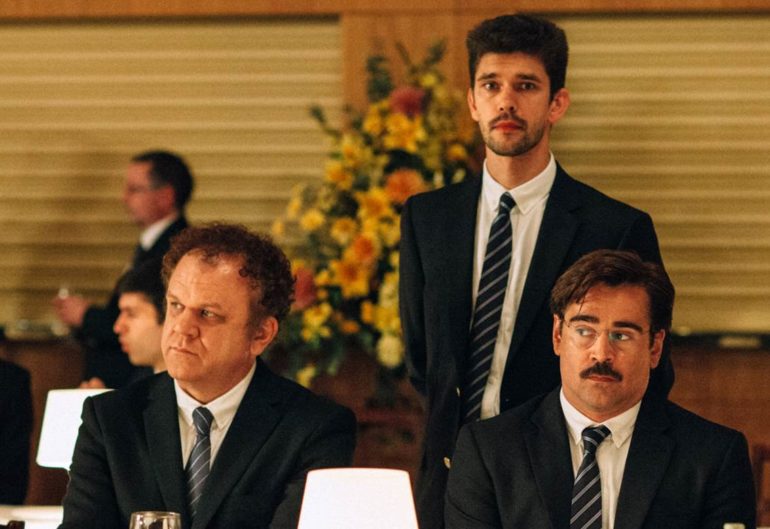It’s said that love can be many things; strong, kind, cruel, patient, blind. In Her, Spike Jonze adeptly termed it ‘a socially acceptable form of insanity’. It’s that intensely personal experience that is paradoxically shared by most, if not all. But, in the case of The Lobster, and in the eyes of director Yorgos Lanthimos, love is nothing more than a force of the unnatural, the myopic and the straightforwardly ridiculous.”
On approach, this Greek/British/Irish co-production seems too broad and blunt to have any real impact or to find a real audience. At its heart is an utterly ludicrous premise: singletons have 45 days to find a partner with similar tastes and characteristics, or they will be turned into an animal. Couple this narrative with the idiosyncratic sensibility of its director and you’re left with an odd amalgamation of high concept and arthouse cinemas where the blueprint for a world is laid down but never filled out. Yet, for all this unorthodoxy, the final result is surprisingly balanced, moving at a smooth pace from beginning to end.
Colin Farrell is the soon-to-be eponymous protagonist here inhabiting a dystopian future which isn’t all that dystopian. He undergoes his singles-therapy in the placid lakeside resort your mammy is always reading about in the Irish Times Magazine. Olivia Colman runs the institution with her husband (of course); they preach the importance of partnering in their daytime seminars and perform over-rehearsed duets for their guests at night. This is a world entirely without ambiguity, where pairing is caring and masturbation merits hands in toasters.
Outside the hotel, matters aren’t much different; or, rather, they are. A band of poncho-wearing loners led by Lea Séydoux lurks in the neighbouring woods, adhering to precisely the opposite code: fun for one, boo for two. There are perks to this side too, it seems; free from the incarcerating pressures of coupling, you can make your own choices, hunt your own food and dance insensibly to electronic music whenever you want. It’s just another side of the never-ending bizarreness of a film that titles 99% of its characters by predominant trait and not by name. (Ashley Jensen’s turn as Biscuit Woman is particularly affecting).
Farrell manages to escape, trading the sanitised setting of the hotel for the vagabond experience of Séydoux’s troupe, only to subsequently fall for fellow-loner Rachel Weisz. She’s short-sighted, he’s short-sighted. In the socially symmetrical make-up of this world, they were simply meant to be. What follows is Romeo and Juliet meets avant-garde Euro-hyperrealism, a film that’s weird, grim, directionless and childishly immature, but ultimately quite brilliant. Try putting that on a poster.
Equally charming as it is strange, it touches on some of the horrors of a world that, even in modern terms, is still fanatically obsessed with the sacred ideals of monogamy and marriage. Subverting this idea, Lanthimos depicts his characters as an ensemble of oversized, socially inept infants, speaking only in clipped declarations. Flirting, in Ben Whishaw’s case, involves asking about swim stroke preference, and marriage is only a matter of faking the occasional nosebleed. Though it might seem obtuse and disconnected, The Lobster actually manages to say quite a bit about of the ridiculous lengths we’re willing to go to to conform to societal standards and about how much we’re willing to lie to ourselves to simply fit in. But, poking fun at both sides of the coin, it too lambasts the reactionary stance of self-serving singles. What, in this day and age, is so wrong with occupying a space in between?
The comedy here is droll, deadpan, drier than burnt toast in a sub-Saharan plain. One expects to find that grating over time, and to a certain extent it is. (One can only put up with so much awkward, stifled chit-chat in the space of two hours). Relieving the burden are moments of intimacy and impassioned stillness that Lanthimos has drawn from his characters, punctuating the silliness. In one of the film’s most endearing moments, Farrell and Weisz dance in unison to a set of synchronised CD players. We cannot hear the music and are kept at a distance, but through the quietness, the languid swaying of bodies, the tenderness of the embrace, the emotion pushes its way through. It frames a fitting closing word on the elusive subject of love; a universally recognisable, if not entirely understandable, emotional entity.

